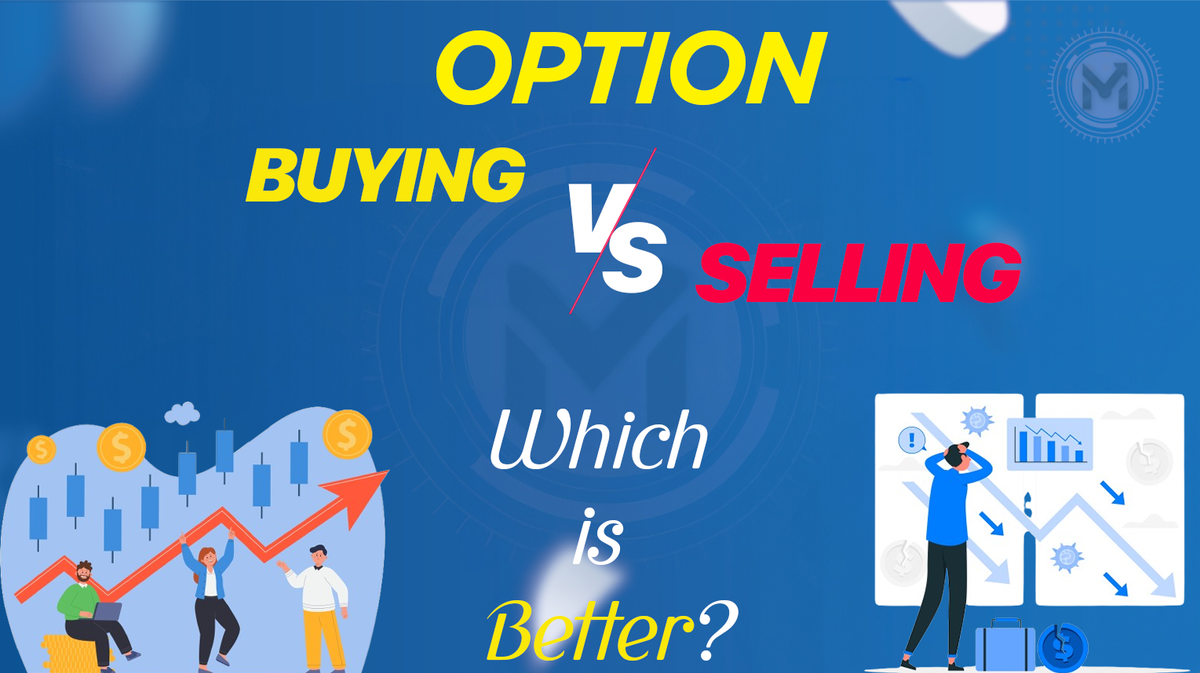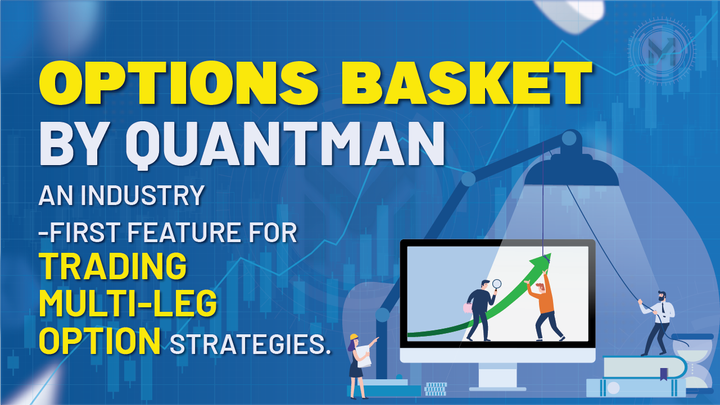Option Buying vs Option Selling: Which is Better?
Options buying offers high reward with limited risk, while selling provides steady income with higher success odds. This blog compares both and shows how QuantMan’s smart tools like drag and drop strategy builders and advanced backtesting give traders the edge in execution and analysis.

In the realm of options trading, two prominent strategies, namely buying options and selling options, present distinct avenues for achieving profitability. The buying strategy primarily emphasizes the potential for high rewards while maintaining a limited risk profile, making it an appealing choice for those looking to capitalize on significant market movements. Conversely, the selling strategy is geared towards generating steady income, often requiring a larger capital investment and exposing the trader to greater risks.
This blog will compare both strategies, highlight key differences, and show how platforms like QuantMan help traders make smarter decisions.
Let's Walk Through Option Buying vs Option Selling
In the dynamic world of options trading, two primary strategies dominate: buying and selling options. Each approach carries its own set of risks and rewards, and understanding their nuances is crucial for traders aiming to maximize profitability. Let's know about the Options in trading. An option is essentially a contract that grants the buyer the right to purchase or sell an underlying asset at a predetermined strike price on or before a specified date. The buyers will pay the premium, while the sellers will receive it.
Understanding Options Buying
Options buying involves purchasing call or put options, granting the buyer the right, but not the obligation, to buy or sell an underlying asset at a predetermined price before a specified expiration date.
Advantages of Buying Options
- Limited Risk: The maximum loss is confined to the premium paid for the option.
- High Reward Potential: If the market moves significantly in the buyer's favor, the returns can be substantial.
- Leverage: Options allow control over a larger position with a relatively small investment.
Disadvantages of Buying Options
- Time Decay: Options lose value as they approach expiration, a phenomenon known as theta decay.
- Low Probability of Success: Statistically, many options expire worthless, making consistent profitability challenging.
Exploring Options Selling
Options selling involves selling call or put options, obligating the seller to buy or sell the underlying asset if the buyer exercises the option.
Advantages of Selling Options
- Income Generation: Sellers receive the premium upfront, providing immediate income.
- Higher Probability of Profit: Due to time decay and the statistical likelihood of options expiring worthless, sellers often have a higher win rate.
- Flexibility: Various strategies, such as covered calls and cash-secured puts, can be employed to align with market views.
Disadvantages of Selling Options
- Unlimited Risk: In scenarios like naked call writing, potential losses can be theoretically unlimited if the market moves sharply against the position.
- Margin Requirements: Selling options often requires a margin account and sufficient capital to cover potential obligations.
|
Aspect |
Buying Options |
Selling Options |
|
Risk |
Limited to premium paid |
Potentially unlimited |
|
Reward Potential |
High, if market moves
significantly |
Limited to premium received |
|
Probability of Profit |
Lower, due to time decay |
Higher, as most options expire
worthless |
|
Capital Requirement |
Lower |
Higher, due to margin
requirements |
|
Complexity |
Relatively straightforward |
Requires advanced risk
management |
Insights from Practical Experience
Many experienced traders favor options selling because of the statistical advantage and steady income it can generate. However, it requires robust risk management techniques and sufficient capital buffer to handle market volatility. On the other hand, options buying attracts traders who seek lower upfront capital commitment with the hope of capturing large movements in the market.
How QuantMan Enhances Options Strategies
Platforms like QuantMan have revolutionized how retail and professional traders approach options strategies.
- Easy Strategy Building: QuantMan allows users to create complex options strategies without any coding, using a simple drag-and-drop interface.
- Extensive Backtesting: Traders can backtest strategies with six years of historical data, covering major indices like Nifty and Bank Nifty.
- One-Click Execution: Once strategies are ready, QuantMan enables seamless, real-time execution with leading brokers.
- Customization and Flexibility: Traders can customize entry and exit rules based on technical indicators, expiration dates, and other market conditions to match their trading styles.
By using QuantMan, traders can better assess the risks and optimize their strategies to improve consistency and performance.
Conclusion
Choosing between options selling and buying depends largely on the individual trader's risk appetite, capital, market outlook, and experience. While selling options statistically offers a higher probability of success, it carries the burden of greater risk exposure. Buying options, though risk-limited, requires sharp market prediction skills for consistent profitability.
Ultimately, with the help of advanced platforms like QuantMan, traders can develop strategies that align with their goals and enhance their chances of success in the highly competitive options market.



